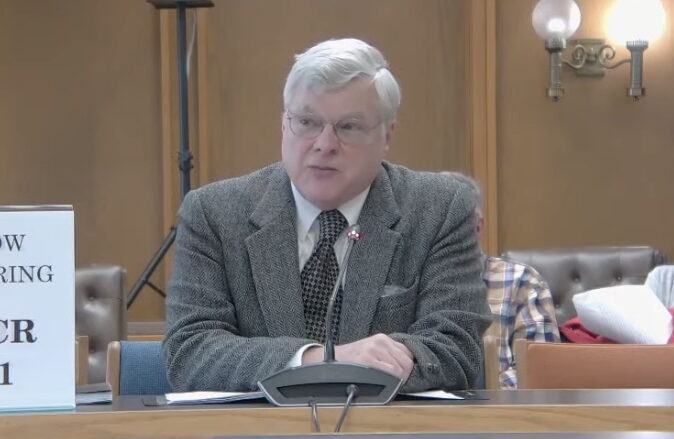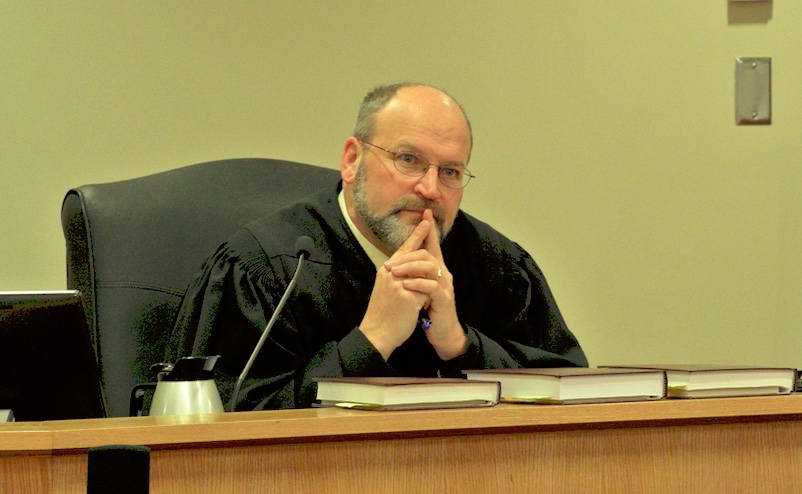NH Supreme Court Rules Ed Funding Inadequate, But Won’t Order State to Pay

The New Hampshire Supreme Court ruled Tuesday that the legislature is underfunding education, but it won’t force the state to pay more.
The much-anticipated ruling in the ConVal education funding lawsuit finds the court backing an increase in the per-pupil adequacy grant to $7,300, while at the same time the justices refuse to force the state to pay up.
“I think the majority of the court had it right. The state underfunds adequacy, and that’s the core ruling in a very complicated decision,” Andru Volinsky, one of the lawyers involved in the original Claremont funding lawsuits, told NHJournal.
Republican Gov. Kelly Ayotte criticized the decision, saying New Hampshire already spends more than enough on education.
“The court reached the wrong decision today. The fact is, New Hampshire is in the top 10 in the country when it comes to funding our children’s education,” Ayotte said. “We are evaluating the ruling to determine the appropriate next steps. In the meantime, I will continue working with the legislature to support our teachers and keep delivering a best-in-class education for every child in New Hampshire.”
The majority decision, authored by Associate Justice James Bassett, was accompanied by two dissenting opinions, reflecting the fact that the debate involves fundamental legal issues, such as the separation of powers within the state’s constitutional system.
The ruling supports Superior Court Judge David Ruoff’s decision that state spending on local K-12 education must be increased by more than $550 million. Conversely, the justices also found that enforcing Ruoff’s decision by making the legislature actually pay that amount would violate the constitutional separation of powers.
Ruoff’s original decision established a proposed base minimum grant of $7,300, while also allowing the legislature to devise any other school funding system that met the constitutional obligations outlined in Claremont. Bassett wrote in the majority opinion that in so doing, Ruoff did not violate the separation of powers between the legislature and the judiciary.
“Instead, [Ruoff] weighed separation of powers concerns along with the history of school funding litigation, the significance of the fundamental right to an adequate education, and the need for a judicial remedy, and determined that [he] should establish ‘a conservative minimum threshold’ that base adequate aid “must exceed”: $7,356.01. In crafting a conservative minimum threshold, [Ruoff] carefully avoided the usurpation of legislative or executive branch powers,” Bassett wrote.
ConVal was joined by Winchester, Mascenic Regional, Monadnock Regional, Fall Mountain, Claremont, Newport, Hillsboro-Deering, Grantham, Oyster River Cooperative, Manchester, Windham, Derry Cooperative, Hill, Mascoma Valley Regional, Nashua, Lebanon, and Hopkinton.
State Rep. Glenn Cordelli (R-Tuftonboro), Chair of the House Education Policy and Administration Committee, said the Supreme Court ruling does not mean the legislature will jump to hike school funding, despite the constitutional violation found by the justices.
“It was very interesting to see the split in justices on the issues of the amount of an adequate education and the immediate payment of the lower court amount,” Cordelli said. “It is also interesting that education funding was increased in the budget just passed, as well as the statement of principles regarding the separation of powers and the legislative versus judicial roles.”
The Supreme Court, though, found Ruoff did cross the line by ordering the legislature to immediately pay the difference. Basset wrote that courts can order the legislative or executive branches to make payments, but not in this case.
“Although we have rejected the proposition that the separation of powers doctrine categorically prohibits the judiciary from awarding injunctive relief like the immediate payment directive should the circumstances and the equities dictate, we conclude that, under the unique facts of this case, the trial court did not accord sufficient weight to separation of powers considerations in crafting the specific injunctive relief that it ordered,” Bassett wrote.
Which is why, rather than ordering the legislature to increase state spending, Bassett’s opinion “urges” them to do so.
“We urge the legislative and executive branches to act expeditiously to ensure that all the children in public schools in New Hampshire receive a State funded, constitutionally adequate education.”
The ConVal lawsuit, brought by the Contoocook Valley School District in Peterborough, argued that New Hampshire was underfunding education and thereby violating the state constitution. The Supreme Court ruled in the 1990s Claremont decisions, that New Hampshire students have the right to an adequate education.
After years of litigation, Ruoff determined that the state needs to spend at least $7,300 per pupil, up from $4,200, in order to come into compliance with the Claremont decisions. Cordelli echoed the complaints of many when he said Ruoff should not be making law by setting a base amount for the grants.
“It is amazing that one unelected judge can determine the cost of an adequate education to the penny. As if money determines if students will learn,” Cordelli said.
But Volinsky said the Supreme Court got it right by backing Ruoff, even if they won’t enforce his decision.
“I think there are things in this decision that make clear that the rule of law abides and that it is the Supreme Court’s responsibility to interpret the Constitution,” Volinsky said.
The Supreme Court was missing Chief Justice Gordon MacDonald, who was recused, and Associate Justice Anna Barbara Hantz-Marconi, who is on leave pending a criminal case. In their place, retired Superior Court Justice Gillian Abramson and former Superior Court Chief Justice Tina Nadeau sat in on the case.
Justices Patrick Donovan and Melissa Countway disagreed with Bassett in backing the $7,300 total, writing in their dissent that Ruoff had ignored the funding school districts receive in addition to the adequacy grants when calculating his number. Nadeau and Abramson wrote their own dissent, arguing that Ruoff does have the authority to enforce the payment.
The real-world consequences of the ruling are difficult to predict, legal experts and legislators told NHJournal.
The state budget, passed last week, includes the statement that “The legislature now deems it necessary to definitively proclaim that, as the sole branch of government constitutionally competent to establish state policy and to raise and appropriate public funds to carry out such policy, the legislature shall make the final determination of what the state’s educational policies shall be and of the funding needed to carry out such policies.”
Cordelli said Tuesday’s ruling, if implemented, will lead to less local control of schools, pointing out that, with more state money comes more state influence in the classroom.
“I have been warning folks for a year that they should be careful what they wish for,” Cordelli said.








